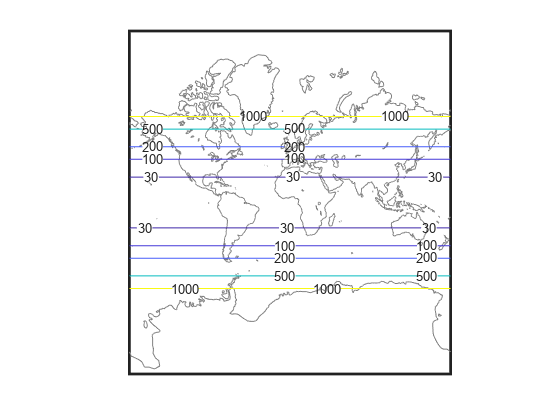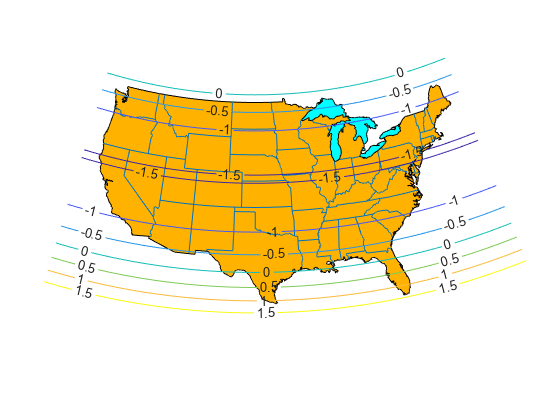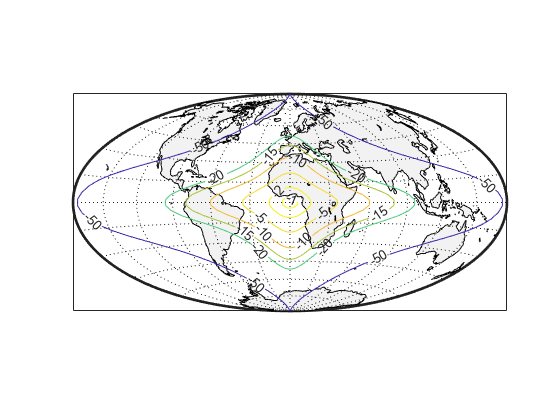mdistort
Display contours of constant map distortion on axesm-based
map
Syntax
mdistort
mdistort off
mdistort parameter
mdistort(parameter,levels)
mdistort(parameter,levels,gsize)
h = mdistort(...)
Description
mdistort, with no input arguments, toggles the display
of contours of projection-induced distortion on the current
axesm-based map. The magnitude of the
distortion is reported in percent.
mdistort off removes the
contours.
mdistort parameter displays contours of distortion for
the specified parameter. Units are in percent deviation (except for angles
for which degrees are used).
| Parameter | Value |
|---|---|
'area' | |
'angles' | maximum angular distortion of right angles |
'scale' or 'maxscale' | maximum scale (the default) |
'minscale' | minimum scale |
'parscale' | scale along the parallels |
'merscale' | scale along the meridians |
'scaleratio' | ratio of maximum and minimum scale |
mdistort(parameter,levels) specifies
the levels for which the contours are drawn. levels is
a vector of values as used by contour. If empty,
the default levels are used.
mdistort(parameter,levels,gsize) controls
the size of the underlying graticule matrix used to compute the contours. gsize is
a two-element vector containing the number of rows and columns. If
omitted, the default Mapping Toolbox™ graticule size of [50
100] is assumed.
h = mdistort(...) returns a handle to the contour
group object containing the contours and text.
Background
Map projections inevitably introduce distortions in the shape and size of objects as they are transformed from three-dimensional spherical coordinates to two-dimensional Cartesian coordinates. The amount and type of distortion vary between projections, over the projection, and with the selection of projection parameters such as standard parallels. This function provides a quantitative graphical display of distortion parameters.
mdistort is not intended for use with UTM.
Distortion is minimal within a given UTM zone. mdistort issues
a warning if a UTM projection is encountered.
Examples
Tips
mdistort can help in the placement of standard parallels for projections.
Standard parallels are generally placed to minimize distortion over the
region of interest. The default parallel locations might not be appropriate
for maps of smaller regions.




